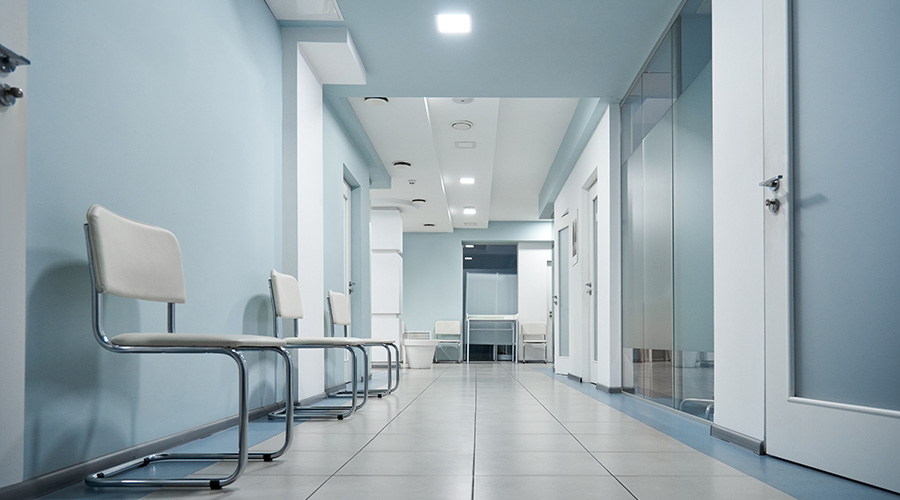Hospitals are among the most energy-intensive facilities. Large in size and capacity, hospitals address diverse needs that require round-the-clock use. This means inevitable energy use which often results in lofty and overlooked consumption, according to an article from Building Operating Management on the FacilitiesNet website.
Motivated to reduce operating costs and support sustainability goals, hospitals are investing in projects to reduce energy consumption. If a hospital can trim its energy use by 20 percent, the existing equipment can last longer and, in the event of an extended utility interruption, the hospital can help more patients while on emergency power. Reduced energy consumption also avoids emissions from traditional energy sources which cause climate change and have quantifiable health impacts. In the world of healthcare, for a hospital to “first, do no harm,” the hospital should be a net-zero building.
The benefits of net-zero buildings have been proven with residential and light commercial facilities. But with the high energy intensity of a hospital typically located on a restrained site, a net-zero hospital raises new challenges for project design teams. But hospitals have found pathways to a net-zero hospital by considering supply and demand. It’s crucial to understand the strategies required to accomplish this feat.
Approaches to net-zero
The energy utilization index (EUI) is the unit used to measure how much site energy a building uses per year; the typical hospital has an average of 235 EUI (the average office building uses just 53 EUI). More than half of this energy in hospitals is for HVAC systems for infection control and comfort. Cooking for patient meal service and on-site cafeterias represents another significant energy use, as do lighting, computers, and medical equipment needed to operate 24/7 in the hospital environment.
Rural and urban hospitals spend up to $3 to 5 per square foot on energy costs alone. This translates to $7,500 to 15,000 in annual energy costs per patient bed. Despite 24/7 occupancy and infection control requirements, there are opportunities for energy efficiency and cost savings. Energy solutions come in two varieties: the demand side and the supply side.
• The demand side is the on-site consumption and management of energy, that is, the amount of energy a hospital uses day-to-day. Think lighting, ventilation, heating, and cooling systems. In a hospital where care is 24/7/365, the demand for continuous energy is high.
• The supply side is how energy is created, and the ability to fulfill the energy demand. This includes any on-site electric generation (for example, roof-mounted solar panels) or subscribing to a large-scale, community-wide energy generation program.
To achieve a net-zero structure requires a holistic approach addressing both the supply and demand sides of energy. Achieving a net-zero rating for hospitals is rare in the modern market and requires diligence and creativity. The best strategy is to minimize consumption first, on the demand side, and then generate the necessary energy in a clean, renewable way, on the supply side.
Net-zero goals are not limited to new construction — existing hospitals can pursue energy conservation projects on existing buildings to address consumption concerns.
An example of a successful revamp of an older project comes from University of Wisconsin Health (UW Health), the integrated health system of the University of Wisconsin-Madison, which serves more than 600,000 patients each year in the Upper Midwest and beyond with 1,400 physicians and 16,500 staff at six hospitals and 80 outpatient sites. UW Health has saved an estimated $13 million over the last five years by improving energy efficiency by 24 percent. One key strategy has been retrocommissioning, which identified ways to make the existing systems work more efficiently to improve comfort for the occupants and reduce energy usage bills. The improvement in energy covered approximately 4.6 million square feet of space of the UW Health enterprise.
Read the full Building Operating Management article.

 How Health Systems Are Rethinking Facilities Amid Margin Pressure
How Health Systems Are Rethinking Facilities Amid Margin Pressure Ground Broken on New Medical Office Building in Scottsdale, AZ
Ground Broken on New Medical Office Building in Scottsdale, AZ University of Texas Gifted $100M for New Medical Center
University of Texas Gifted $100M for New Medical Center Beyond Backup Generators: Building Layered Energy Resilience
Beyond Backup Generators: Building Layered Energy Resilience Shannon Health System to Acquire Scenic Mountain Medical Center
Shannon Health System to Acquire Scenic Mountain Medical Center